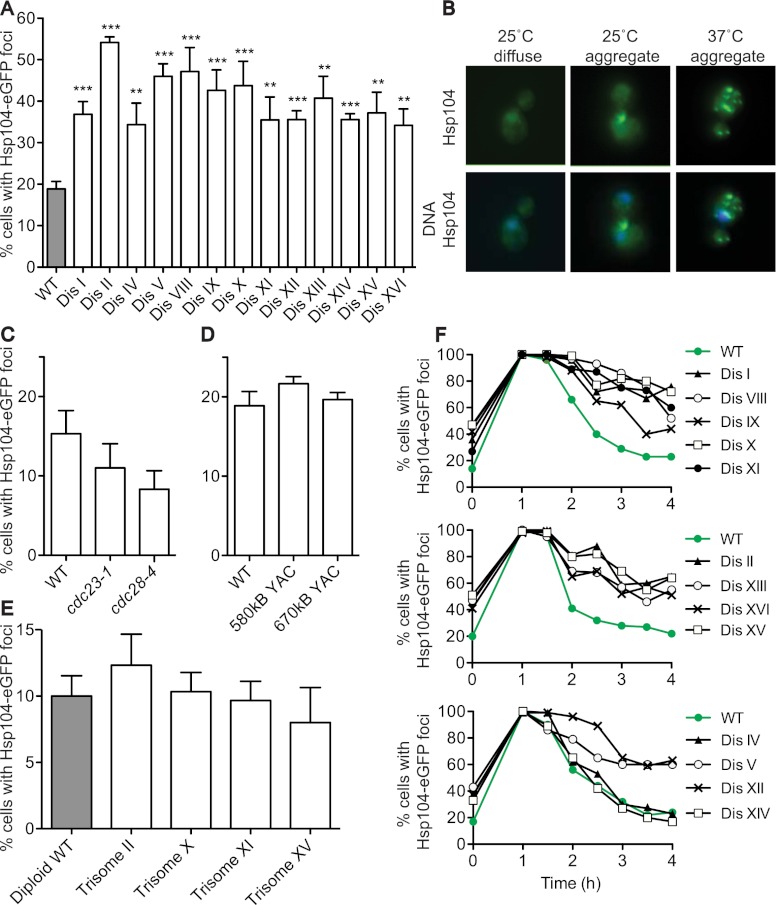Figure 1.
Disomic yeast strains harbor an increased protein aggregate load. (A) Wild-type (WT) and disomic yeast strains containing an HSP104-eGFP fusion were grown to exponential phase in YEPD, and the percentage of cells harboring Hsp104-eGFP foci was determined. n = 3; SEM, n = 100 cells per time point; (**) P < 0.005; (***) P < 0.0005; Student's t-test. Strains, in order, are A31392, A31393, A31394, A31395, A31396, A31397, A31398, A31399, A31400, A31401, A31402, A31403, A31404, and A31405. (B) Images of Hsp104-eGFP aggregates. Aggregates are in green, and DNA is in blue. (C,D) Wild-type (A25654), cdc23-1 (A29766), and cdc28-4 (A29765) strains (C) and strains harboring YACs containing 580 kb (A28922) or 670 kb (A28925) of human DNA (D) were grown as in A to determine the percentage of cells with Hsp104-eGFP aggregates. (E) Quantification of Hsp104-eGFP foci in trisomic yeast strains grown as in A. Strains, in order, are A31406, A31407, A31408, A31409, and A31410. Note that the number of cells with Hsp104-eGFP aggregates in diploid cultures is lower than in haploid cultures. The basis for this is unclear at present. (F) Strains grown at 25°C were shifted to 37°C. The percentage of cells with Hsp104-eGFP aggregates was determined at the indicated times after temperature shift. n = 100 cells per time point. Two replicas of this experiment are shown in Supplemental Figure S1. The strains are the same as in A.

